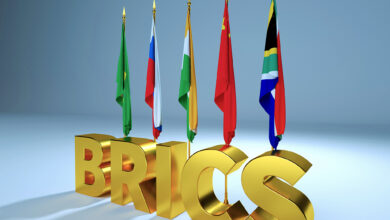JPY is the weakest of the major currencies in Q1 despite the rate hike

The Japanese yen
The JPY hit a fresh 34-year low against the dollar earlier on Wednesday morning. Once again, the Japanese authorities stepped in to defend the yen. After Japan’s vice finance minister for international affairs warned earlier this week against speculators trying to sell off the yen, the country’s finance minister reiterated this morning that Japan would take “decisive steps” against excessive currency moves. The Yen is on track to be the worst-performing major currency this quarter, down more than 7% against the dollar in the period.
The Australian dollar
The AUD was down across the board on Tuesday. In Australia, the monthly consumer price index (CPI) indicator stood at 3.4% in the year to February 2024, unchanged from the previous two months and below market expectations of 3.5%. If inflation remains outside the Reserve Bank of Australia (RBA)’s target range of 2–3%, this latest reading is the lowest since November 2021.
China’s industrial production
China’s industrial profits returned to growth in February. Industrial firms posted higher profits in the first two months of the year, up 10.2% compared to the same period in 2023. This follows a 2.3% profit decline for the whole of 2023. This adds to previous signs that economic recovery is gaining traction in the country. Earlier this month, China’s industrial production expanded by 7% year-on-year in January–February 2024 combined, well above market forecasts of 5%.
China’s property market
Economists remain wary that this stabilization and potential recovery in China could be dented by an uncertain global demand outlook and by the persistent fragility of China’s property market. And the market still awaits policy measures to further support a recovery. In the meantime, the lack of measures weighs on commodity prices. Despite better-than-expected industrial data, iron ore prices remain under pressure.
Lloyds Bank
British businesses have trimmed their plans for staffing and wage increases this month, according to Lloyds Bank. Its Business Barometer, which measures the gap between firms planning to hire and those planning cuts, fell to 27% from February’s almost two-year high of 36%. The survey suggests that April’s big increase in the minimum wage is weighing on employers. Britain’s minimum wage will rise by nearly 10% in April.
Eurozone economic sentiment
At 10 a.m., eurozone economic sentiment is forecast to rise to 96.3 for the month of March from 95.4 in February. This would be the first rise in three months, but the overall picture remains the same. Sentiment remains subdued as businesses deal with still-high inflation, high borrowing costs, and weak external demand.
DS Smith
Paper and packaging group DS Smith confirmed on Tuesday, after the close of European equity markets, that it was in discussions with International Paper. US-listed International Paper made an all-stock offer, valuing DS Smith at £5.72 billion. International Paper’s offer represents a premium of 48% to DS Smith’s closing price on February 7, the day before Mondi announced its preliminary bid. DS Smith also said that discussions with Mondi were continuing. Earlier this month, Mondi had reached an in-principle agreement for an all-share offer to buy DS Smith for £5.14 billion, a 33% premium to DS Smith’s last close on February 7. The sector is going through a consolidation phase. Late last year, Smurfit Kappa announced its acquisition of WestRock in a $11 billion deal, which is still pending closure.
H&M
H&M reported on Wednesday a larger-than-expected operating profit for the December–February period. Operating profit in the Swedish group’s fiscal first quarter was SEK2.07 billion, up from SEK725 billion a year earlier, against a mean forecast of SEK1.42 billion.
Barclays
Barclays has raised its recommendation on LVMH stock to Overweight from Equal Weight, with a new target price raised to €937 from €825.
Crude oil
Crude oil inventories increased by 9.34 million barrels last week, according to the API. Meanwhile, gasoline inventories fell by 4.34 million barrels, and distillate inventories rose by 531,000 barrels. Next week, OPEC+ ministers are due to meet, but don’t expect any new policy recommendations. Yesterday, three OPEC+ sources told Reuters that the organization was unlikely to make any oil output policy changes until its June meeting.





